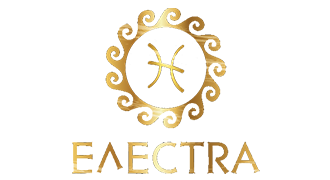🌐 Variables in the Extra-Operational Environment: A Business and Marketing Perspective
Abstract
The extra-operational environment includes all external variables that influence an organization but are beyond its direct control. These forces shape opportunities and threats, influencing decision-making, competitiveness, and long-term sustainability. Understanding these variables is essential for strategic planning, environmental scanning, and proactive marketing. This article explores the key variables in the extra-operational environment, categorized under common models like PESTEL and Porter’s Five Forces, and explains their implications for businesses.
1. Introduction
While companies can control internal factors such as operations, staffing, and budgeting, their success is significantly shaped by the external environment — the space in which the business operates socially, legally, and economically.
This extra-operational environment comprises variables that:
- Affect demand, supply, pricing, branding, and logistics.
- Evolve rapidly and require constant monitoring.
- Cannot be changed by the company but must be responded to.
2. Key Categories of Extra-Operational Variables
📊 A. PESTEL Analysis: Macro-Environment Variables
The PESTEL framework helps identify the broader, macro-level variables that affect the business environment:
1. Political Variables
- Government stability
- Tax policies
- Trade regulations and tariffs
- Environmental laws
- Labor laws
Example: A change in import tariffs can affect a retailer’s sourcing strategy.
2. Economic Variables
- Inflation and interest rates
- Employment levels
- Exchange rates
- Economic growth (GDP)
- Consumer purchasing power
Example: Recession affects consumer spending, leading to reduced demand for luxury goods.
3. Sociocultural Variables
- Demographics (age, ethnicity, education)
- Cultural values and lifestyle trends
- Health consciousness
- Attitudes toward sustainability
Example: Rising health awareness increases demand for organic food.
4. Technological Variables
- Innovation and R&D
- Automation and AI
- E-commerce platforms
- Communication technology
- Cybersecurity
Example: The rise of social media transforms marketing and customer engagement.
5. Environmental (Ecological) Variables
- Climate change
- Resource scarcity
- Carbon emissions regulation
- Waste disposal standards
Example: EU environmental laws affect product packaging design and materials.
6. Legal Variables
- Consumer protection laws
- Advertising regulations
- Intellectual property rights
- Employment law
- Data privacy laws (e.g., GDPR)
Example: GDPR impacts how companies collect and manage customer data.
🧩 B. Porter’s Five Forces: Industry-Level Variables
Michael Porter’s framework identifies external pressures within an industry that affect competition and profitability.
1. Competitive Rivalry
- Number of competitors
- Product differentiation
- Pricing strategies
2. Threat of New Entrants
- Market entry barriers
- Capital requirements
- Brand loyalty of existing players
3. Bargaining Power of Suppliers
- Concentration of suppliers
- Switching costs
- Supply chain risks
4. Bargaining Power of Customers
- Price sensitivity
- Product alternatives
- Availability of reviews and comparisons
5. Threat of Substitutes
- Availability of alternatives
- Technological disruption
- Changes in customer preferences
3. Other Extra-Operational Variables
🌍 Globalization
- International competition
- Global consumer expectations
- Offshoring and outsourcing trends
Example: Global sourcing lowers production costs but adds complexity.
📱 Media and Public Perception
- Social media influence
- Viral reviews and feedback
- Activism and cancel culture
Example: A viral video criticizing unethical practices can harm a brand’s image overnight.
🏛️ Stakeholder Expectations
- Investors demanding ESG (Environmental, Social, Governance) performance
- NGOs pushing for ethical sourcing
- Customers expecting transparency
4. Implications for Business and Marketing
| Variable Type | Marketing Impact |
|---|---|
| Political | Adapting compliance, campaign timing |
| Economic | Price sensitivity, luxury vs. budget branding |
| Social | Influences branding tone, product offerings |
| Technological | Requires digital adaptation and innovation |
| Environmental | Drives green marketing, ethical messaging |
| Legal | Influences claims, labeling, data handling |
| Competitive Forces | Shapes differentiation, pricing, loyalty programs |
5. How Businesses Can Respond
- 📡 Environmental Scanning: Regularly assess macro and micro trends.
- 🛠️ Scenario Planning: Prepare for political, legal, or economic shifts.
- 💬 Consumer Listening: Monitor feedback, social trends, and cultural shifts.
- 🌱 Sustainability Integration: Align with environmental expectations.
- 🔍 Competitor Analysis: Track innovations and market share movements.
- 📑 Compliance Audits: Ensure legal and regulatory adherence.
6. Conclusion
Variables in the extra-operational environment significantly influence a company’s ability to compete, grow, and sustain trust. Although businesses cannot control these variables, understanding and adapting to them allows for proactive strategy and stronger marketing alignment. By combining macro-environmental awareness (PESTEL) with industry-level analysis (Porter’s Five Forces), businesses can effectively navigate uncertainty and seize emerging opportunities.

